#minoan wings
Text


#best childhood book#poll#magic puppy#the tiara club#help i’m trapped#the incredible worlds of wally mcdoogle#silly verse for kids#minoan wings#candy fairies#little old mrs pepperpot#jill's ponies#the strictest school in the world
14 notes
·
View notes
Text

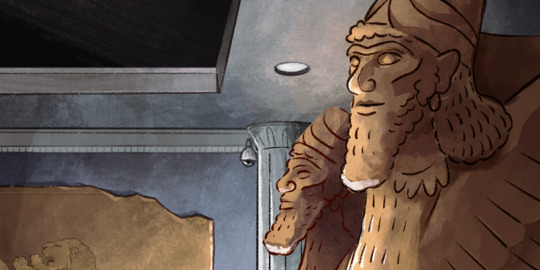
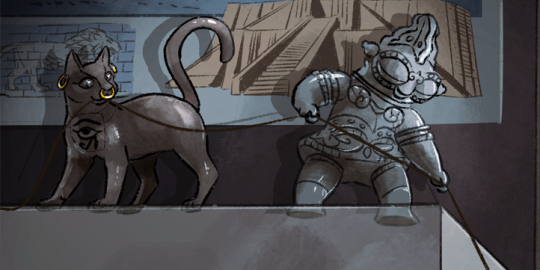


the elevator pitch for this is "a Toy Story/Night at the Museum-style educational series that teaches kids about art history"
they probably wouldn't let me have the tits-out minoan snake woman but that's ok
#illustration#my art#from left to right:#bastet#dogū#minoan snake goddess#colima dog#jizo statue#mesopotamian winged lions#i made the sketch for this back in 2020 and was too afraid to finish it#i dont think it ended up how i wanted it but im glad it ended up somewhere
2K notes
·
View notes
Photo

Sun and Death. Icarus Falling (2022)
#icarus#icarus falls#icarusfalling#sun#icarus and the sun#ancient greek mythology#minoan#bronze age#mycenaean greece#painting#marysmirages#art#wings#wingedman
2K notes
·
View notes
Photo

Talos Stater Ancient Coin Minoan Bull Crete Phaistos King Minos Greek Reproduction Greece Replica Coin - Lotoumpas.
https://lotoumpas.ecrater.com/
#talos#winged#crete#ancient#coin#stater#bull#minoan#king#minos#king minos#phaistos#greek#greece#collectible#collectibles#collector#minotaur
1 note
·
View note
Note
Could I please get some fun facts about the glorious country of Greece?
Greece, or "Hellen" as her friends call her, is the country where mythology and pillars come from. Every child across the world is taught that pillars can be Doric, Ionic, or Cornthian, but not why this matters. They are also taught that Greece exists, but few learn why this is important either.
Greece includes many fictional islands such as Chryse, Phraxos, and Aeolia. It also has real islands such as Crete, where the Minoans once lived, Minoa, where some cretins once lived, and Lesbos, where Sappho lived. Sappho is regarded by historians as the first woman to have female friends, because many historians do not know what gay people are. Greece is known outside of such circles for having many gay people, being the second most popular LGBT dwelling place after only Tumblr itself.
Greece is known as the "Birthplace of Democracy" because it achieved the state in the early 1970s with something called a "Metapolitefsi," which is unrelated to the Dr. Seuss concept of the same name. The Metapolitefsi was needed after a right-wing military junta took over the country, much like in the United States in 2025.
120 notes
·
View notes
Text

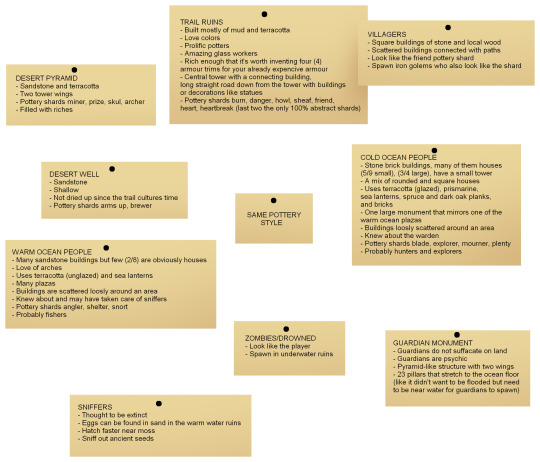
text from the pictures goes under the cut because while i recognise that the text is small my main points gotta go above it, theres also some other fun things
-
okay heres some brief context for my conspiracy theory:
art, which pottery is a very well preserving medium of, can tell how a culture spreads, we know that minoan crete influenced micanean greece because we've found pottery of the minoan style that was made in greece even if we barely know anything about the minoan people then we do know this, so the assumption im using here is that the pots are all of the same style which then presents sort of a narrative
domino 1
the trail culture has some sort of connection with the coastal warm ocean people and cold ocean people, they also have a connection to (or are) the desert people who made the pyramid and frequents the desert well that never dries up, using its water for potions and magic or worship. they also have friendly connections to villagers or something that looks like them to a point where they make motifs about them
domino 2
the guardian monument, at this point in time just barely above the water level so that the inside is dry but the guardians can enter and exit, is attacked by the cold ocean people for prismarine and other such luxury items. the cold ocean people trade these items so that they end up with the warm ocean people who seem to be peacefully fishing and taking care of the sniffer, cultivating the seeds they dig up
domino 3
Something happens. The warm ocean people may have caught a virus that make them immune to the dangers of creepers and find sunlight dangerous needing to take shelter under savannah trees, the sea level could also rise. We don't know exactly what happened but whatever did happen causes conflict on a personal level as seen by the type of damage done to the cold ocean peoples buildings. At this point contact either ceases between the trail culture and the ocean people as buildings are destroyed and in time, submerged. Or the trail culture sees ocean people joining them as refugees.
However much they flee, though, the trail cultures structures also get buried and forgotten.
domino 4, the end
the guardians now live in the water full time but are still amphibious. the pyramid well civilisation vanish and the waters have covered what remains of the ocean peoples towns as well as the sniffer eggs that are forced to go into stasis as hatching in the water is less than ideal, waiting for someone to bring them up to safe ground again.
-
there is something living on the bottom of the ocean. its not what it used to be, but they still live in their homes. not alive but not acting very dead, the ocean people are still there, looking like the player.
maybe the universe loves us
maybe the universe hated them
maybe the universe regrets what happened
VILLAGERS
Have square buildings made of stone and local wood types
Buildings are scattered around an area but connected by paths
Villagers look like the friend pottery shard, and spawn the iron golem which also looks like the friend shard
TRIAL RUINS
Their buildings are mostly made from mud, terracotta and bricks
They loved color, everything is very colorful
Prolific potters/pot makers and amazing glass workers
A culture rich enough that it's worth inventing four (4)
armour trims for your already expensive armour
Have a central tower with a connecting building, a long straight paved road down from the tower with buildings or decorations like statues
Pottery shards burn, danger, howl, sheaf, friend, heart, heartbreak (the last two being the only 100% abstract shards)
DESERT PYRAMID
Made of sandstone and terracotta, has two tower wings
Pottery shards miner, prize, skull, and archer
Created by a wealthy people as it's full of riches
DESERT WELL
Made of sandstone
Very shallow
Hasn't dried up since the pottery cultures time
Pottery shards arms up, brewer
WARM OCEAN PEOPLE
Many sandstone buildings but only a few (2/8) are obviously houses
They love their arches
Uses terracotta (unglazed) and sea lanterns
Many plazas
Buildings are scattered loosely around an area
Knew about and may have taken care of sniffers based where eggs are found
Pottery shards angler, shelter, snort
Might have been fishers based on the pottery
SNIFFERS
Thought to be extinct
Eggs can be found in the sand in the warm water ruins
Eggs hatch faster near moss
They sniff out ancient seeds
COLD OCEAN PEOPLE
Stone brick buildings, many of them houses (5/9 small), (3/4 large), they have a small tower as well
A mix of rounded and square houses
Uses terracotta (glazed), prismarine, sea lanterns, spruce and dark oak planks, and bricks
One large monument that mirrors one of the warm ocean plazas
Buildings loosely scattered around an area
Knew about the warden
Pottery shards blade, explorer, mourner, plenty
Might have been hunters or explorers based on the pottery
GUARDIAN MONUMENT
Guardians do not suffocate in air, they can survive indefinantly but spawn only in water
Guardians are psychic or otherwise magic
Pyramid-like structure with two wings
23 pillars that stretch to the ocean floor (like it didn't want to be flooded but needs to be near water for guardians to spawn)
ZOMBIES
Look like the player
Spawns in the underwater ruins
CONNECTING POINT: similar pottery style
-
random thoughts at the end:
i still actually think that the trail culture is nomadic, maybe herders and traders with semi permanent settlements for farming when the seasons allow for it, the ruins we find being those semi permanent structures that are more like waypoints or settlements along a path
the absolute wealth of having four whole different armour trims dude, i really like the idea of the trail people and pyramid people being the same but considering how not buried the pyramid is that might be a long shot, could be the remnants of the trail people tho, like finding traces of people during the bronze age collapse, their cities get buried and they keep the pottery style with them and they manage to squeeze out a new armour trim, and they extrapolate on the wealth part of their culture and do grave goods re: pyramid with so much hidden wealth
unrelated but since im tagging @nightshadeowl i might as well talk about the reconstruction work ive done, im not sure ill post the pictures because its very cramped on the flatland but the damage done to the cold ocean ruins is very much not natural, it looks like it blew the fuck up (it being the biggest house in the generation pool) and theres no sign of it ever having a roof even tho it very obviously should have, also the warm water peoples bungs stumped me for a long time because of the lack of houses, all the buildings are very artsy and i wonder why that is, one of the arches kinda reminded me of the ones at the ocean monument but i think that was coincidental
wish i could more easily summon in these things and shoutout to the blacksmithy in the trail ruins for also looking blown the fuck up, what happened to you to have no roof to be seen, weird spike terracotta walls, and a perfectly intact interior, only of its kind
308 notes
·
View notes
Text
A continuation/part two to my favorite/lesser known Hermes epithets because I am a fool and forgot some or found more.
Hermes Psykhostasia - Weigher of souls (lives) or One who weighs souls (lives). In a mix of fulfilling his duty as a guide to all souls and being present before and after death while also being the messenger of Zeus, this aspect shines through. He carries out the will of both the Moirai and Zeus at times and in others he alone holds sway over the decision. Whichever ker (keres) was heavier (to the point of tipping the scales) was the one to die between the two individuals.
Hermes Panepóptēs - All-Observing. It's an epithet I can run with mainly found in the PGM
Hermes Kêryx - Herald of the Gods or Crier for a more rudimentary translation. It's a fairly interesting epithet in regards to naming Hermes as the son of Demeter (identified with Maia). In this specific incarnation, he has special control over the winged Keres in-flight into and out of Demeter Pandora, personified wine-storage jars blamed for all of the ills of humans, where only Hope lingered at the rim.
Hermes Hippios - Of the Horses. Hermes Hippokourios - Horse Tender. Though a rare aspect of his, he does connections with horses in a manner similar to Athene and Artemis. One of his famous sons was known for his skill when it came to handling horses, especially for races. He is also known for gifting the Dioskouroi with their horses and driving the chariot of Hades whenever Persephone enters or departs the underworld. Anyone that owned horses would pray to Hermes so they would thrive and for their increase.
Hermes Araoia / Hermes Araios - The Ram. One of the oldest attestations of the god is found in the Linear B inscriptions at Pylos and Mycenaean Knossos. With this epithet in mind, depictions of Hermes with sheep/ram horns would be fairly appropriate and a part of his appearance I see from time to time.
Hermes Kranaios - Of the Fountain? Of Springs. I know this one was on the last one but I really spaced on getting into why I love and appreciate it. It's a spring/nature sanctuary, one that ties him to water/rivers and what is heavily associated with deities that heal/can heal??? springs and pools of water!!!
Sources:
Weighing iconography of love in classical and early hellenistic art: considering allusions and metaphor in images of Aphrodite balancing Eros by Hannah Lisbeth Jones
L. D. Caskey, J. D. Beazley, Attic Vase Paintings in the Museum of Fine Arts, Boston
πανεπόψιος
Aischylos and the Trojan cycle: The lost tragedies by Ioanna Hadjicosti
Porphyry: On Abstinence from Killing Animals translated by Gillian Clark
Kerykes wikipedia entry
A Replica of the Hermes Propylaios by Alkamenes Found at Qasr Al-Hallabat by Ignacio Arce
Mycenaean Divinities
Where I pulled Hermes of the Fountain from as well as Hermes of the Springs
Kretan cult and customs, especially in the Classical and Hellenistic periods: a religious, social, and political study by Carolyn Schofield
Burning bulls, broken bones: sacrificial ritual in the context of palace period Minoan religion by Robert James Cromarty
Hermes Favor: Dioskouroi
“Dearest to be Man's Companion”: Hermes, Divine Aid, and Agency by David Chou
The link is down for now but has more information on Hermes and his connection to horses
184 notes
·
View notes
Text
Random Silmarillion prompts! (or whatever else you want to use them for)

out of the water
hot
Minoan-inspired clothing
frozen
light(s) in the sky
tied up
wings
lil path in the woods
settlement
veil
cradling a body
cave
warrior/healer
fire
music
17 notes
·
View notes
Photo


"The Griffin"
Talon Abraxas
The Griffin is a legendary creature from Egyptian, Mesopotamian, Persian, Minoan, Greek, and Roman mythology that has the body of a lion and the head and wings of an eagle. Since the lion was considered the "King of the Beasts" and the eagle the "King of the Air," the griffin was thought to be an especially powerful and majestic creature with both royal and divine associations.
83 notes
·
View notes
Text
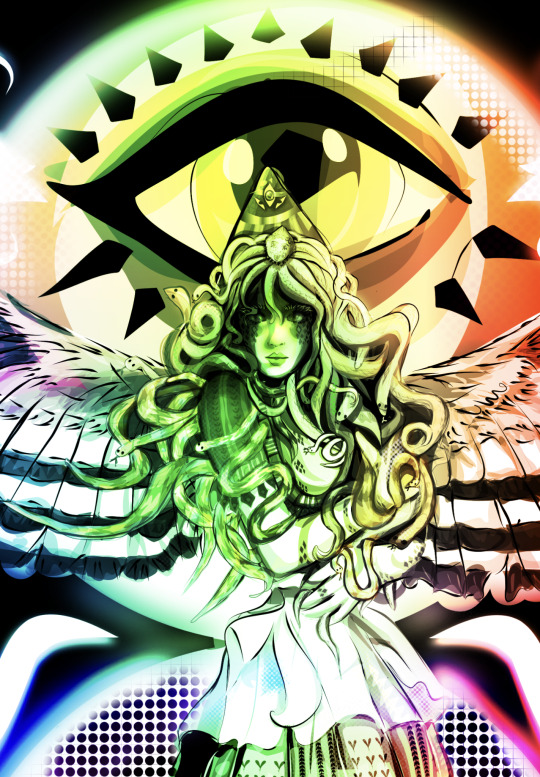
Medusa as a Jester for Greek Carnival of Apokries 🎠🎪🎭🌈.

So here are the design elements I added. The layered dress is based on the clothing of Ancient Minoan Women from Crete (3000-1100 BCE).
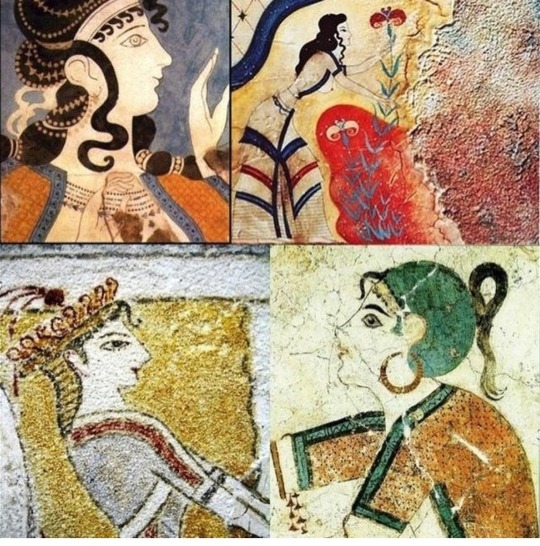

As you can see the skirt were layered with fabric prints, cut at the waist, then totally open at the chest.
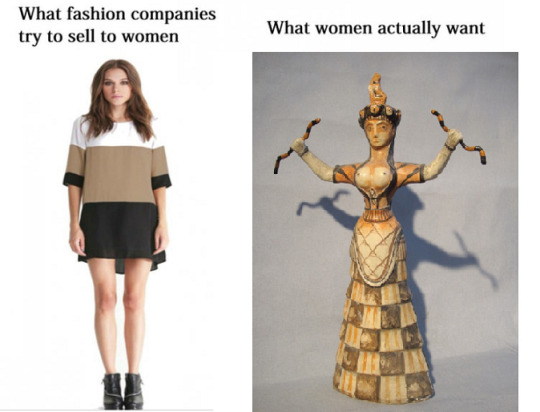
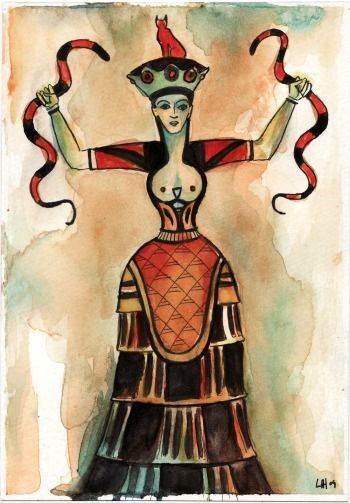
I tried to mimic the design, but gave it a more flowing 'Alice in Wonderland' , Jester look for the Carnival theme.
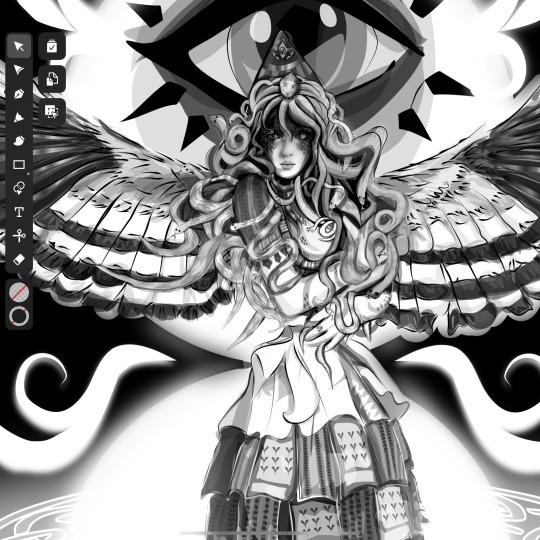
The wings are based on the African/ Greek HooPoe which I felt looked like the original Medusa wing design. Her wings are described as black, white, and gold.
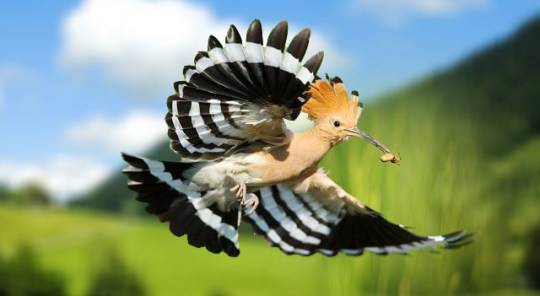
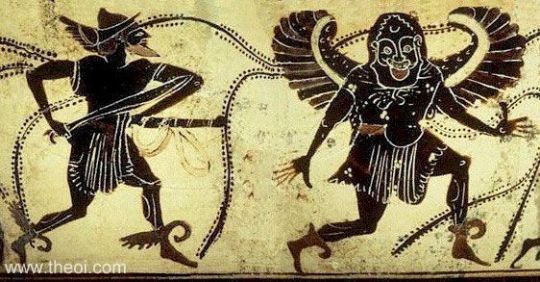
Then I added a Jester look to give her a unique style to go along with her scales. This is in theme with the Greek Carnival of Apokries. This festival dates back to Dionysos, the ancient Greek god of wine, fun and fertility.

That's my art and history rant! Hope you enjoyed! 🐍🎭💕
#medusa#greek mythology#ancient greece#ancient history#mythology#feminism#mythology and folklore#gorgon#goddess#greek gods#harpy#harly quinn#jester#minoan#ancient crete#greek myth art#snake goddess#snake#gorgon oc#character design#oc art#perseus#andromeda#harpies
13 notes
·
View notes
Text

The Malia Pendant is a gold pendant found in a tomb in 1930 at Chrysolakkos, Malia, Crete. It dates to the Minoan civilization, 1800-1650 BC. The pendant was excavated by French archaeologists and was first described by Pierre Demargne. The pendant is commonly called The Bees of Malia.
The Malia Pendant is on display at the Heraklion Archaeological Museum, on the island of Crete in Greece. It is probably the single most famous piece of Minoan jewellery.
The pendant takes the form of two insects, which are identical (mirror images) joined head-to-head with the tips of their abdomens almost touching in a symmetrical or heraldic arrangement. The insects’ wings spread backwards. From the lower edges of the wings and a point close to the tip of the abdomen dangle three discs. With their legs, the insects are "grasping" a centrally placed circular disc and there is a second, smaller, smooth globule placed above this and between the insects' heads as if they were eating it.
5 notes
·
View notes
Note
Might have been in the last one, but the Minoan Wings series and Nim's Island by Wendy Orr. Also the Ruby Redfort series
Added them all!
1 note
·
View note
Text
"That Minoan and Mycenaean states pursued different strategies of political rule is reflected in different architectural plans found at Minoan and Mycenaean palaces.
Minoan palaces are designed around a large central court flanked by residential quarters, storage facilities, and ritual suites. The central court is the main space around which palace traffic circulated, and various wings of the building were most easily (or only) accessible via the central court (Driessen 2002 , 2004). Many Aegean prehistorians have accordingly advocated replacing the term “palace” with “court compound.” while the palace at Knossos has a “throne room,” its function appears to have been related more to ritual practices rather than political ones, and the throne itself is probably a later feature added during the Mycenaean period (Driessen 2002). Other Minoan palaces do not have throne rooms, and an iconography of the ruler is missing from Minoan representational art until the very end of the Neopalatial period (Davis 1995), which is very typical of corporate states (Blanton et al. 1996).
Moreover, there is an absence of very wealthy burials in Protopalatial and Neopalatial Crete that we might call “royal,” although there are major depositions of wealth within the palaces themselves. Recent work on Minoan palaces has, in fact, suggested that they were “communal, ceremonial centers that were used both by non-elite (outside) and by elite groups (inside) as meeting places for ritual, integrative actions” (Driessen 2002,). That the courts of the Minoan palaces were used for major communal rituals is indicated by two miniature frescoes found at Knossos, the Grandstand Fresco and the Sacred Grove Fresco.
The ritual role of Minoan palaces should not, however, diminish their administrative and economic roles, which were crucially important. Storage of agricultural staples was extensive in both Protopalatial and Neopalatial palaces (Christakis 2004, 2008), and the administrative texts of the Minoan palaces, while undeciphered, clearly monitor large amounts of foodstuffs alongside other valuable commodities and human labor (Palmer 1995). Even if these foodstuffs were ultimately destined for communal banqueting ceremonies, the economic impact of the Minoan palace cannot be ignored. It appears that Minoan economy and ritual were tightly integrated, not mutually exclusive, components of the larger, corporate state system (Day and Relaki 2002, 219–20).
Mycenaean palaces on the Greek mainland, on the other hand, are organized around a central “megaron” complex, which consists of a porch, an anteroom, and a large rectangular room with a central hearth bracketed by four columns and a throne regularly located to the right of the entrance. Flanking this megaron complex are small courts, storerooms, administrative quarters, and residential suites. Mycenaean architecture thereby emphasizes the importance of the enthroned king, whose title, as we know from the clay administrative tablets written in Linear B, was wanax (wa-na-ka).
Wealthy burials are an endemic feature of Mycenaean palatial societies and the communities that preceded them. At the palatial sites of Mycenae and Pylos, large corbeled “tholos” tombs are closely associated with the palace itself. These tombs have architectural precursors on the mainland in the form of Middle Bronze Age tumuli and on Crete in the form of large, circular tomb chambers (Rutter 1993, 789; Parkinson and Galaty 2007, 122). Mycenaean art, like Minoan art, lacks a clear iconography of the king himself; rather, the wall paintings of the palace act as a frame or focalizing device for the wanax, providing a ‘first-person’ (rather than ‘third-person’) iconography of power (Bennet 2007). As with the tholos tombs, the iconographic vocabulary of these artistic frames at Mycenaean palaces (e.g., heraldic lions/griffins, in-curved altars) is largely borrowed from the Minoan world.
In terms of political economy, Mycenaean palaces were interested in controlling the acquisition of exotic raw materials such as ivory, as well as their distribution as finished products (Burns 1999). Many of these goods are found deposited in rock-cut chamber tombs and corbeled tholos tombs, some of which are truly monumental (Cavanagh and Mee 1998). Palace-sponsored feasting is a feature common to all Mycenaean centers and arguably was one way for the palace to promote the centrality of the state, along with the individuals and corporate groups who contributed staples and material, in ritual practice. These features can be associated with network (as opposed to corporate) strategies that center on the individual and the control of prestige goods."
-State and Society, in The Oxford Handbook of the Bronze Age Aegean
#minoan crete#minoan society#minoan architecture#minoan palaces#mycenaean greece#mycenaean society#mycenaean architecture#mycenaean palaces#quotes#excerpts
18 notes
·
View notes
Photo

So close to the sun (2020)
#icarus#sun#so close to the sun#flight#wings#ancient greek mythology#mycenaean greece#mycenaean#minoan#marysmirages#art#painting#drawing#illustration
1K notes
·
View notes
Text
Thyroid::Throat ChakraKan Fairytale Visualization
Views from Hydriot, the Thyroid

CLICK ALL LINKS, HILIGHTED BLUU
Origin: the Islands of Hydra
Hydriot’s topography stretches East & West. Its borders fan themselves outward. causing a concave isthmus to form in the middle of the land. From a bird’s eye view, Hydriot appears as the glyph “H”, an Hourglass turned sideways, or as a Minoan shield.
Hydriot’s Eastern and Western borders wrap around the one of the main wind trains within the Universal Wind System; The Trachea. The Trachea is a free-flowing train for Air passengers traveling to Inhale or Exhale. Accompanying the Trachea is a junction, The Lair of Nyx (aka Larynx or Voice Box), which sits North atop the Trachea tracks, carrying the Voices. And most importantly, there is the Fire Nyx (Pharynx)- a busy, crowded, hot subway, spearheading the entire wind system. Fire Nyx bustles from below the Lair of Nyx and Trachea, loading and delivering its passengers into other systems. These Wind Trains are on and poppin 24/7, filling Hydriot with soft echoes of clicks, crescendos, decrescendos, drips…
…hums, laughter, singing, swallows…
whispers, and whistles…
They set the tone from beyond, all throughout the land.
Unbeknownst to passengers, Hydriot sets the tone for them too- responding as subtle & felt as the pitter patter of butterfly wings…
Hydriot is even tempered, humid, and windy- of course. The Fire Nyx seems to have no effect on the temperature, and any lingering heat from the Wind Trains is cooled by Hydriot’s atmosphere. The land is rich, home to grasslands and old growth forest, moistened by bordering Rivers (Vagus, Sympathetic Nerves, Thyroid Arteries, Laryngeal Nerves) that innervate the land. Throughout, one may find evidence of a time when Hydriot was once a deep underwater island, overrun with Hagfish, ruled by Darkness.
Hydriot receives light from a few sources. Its main source is a glowing, royal blue Pyramid (Pyramidal Lobe). This pyramid emerges from a narrow land strip called the Brink. The Brink stems out north from Hydriot’s isthmus, and meets mysterious ends. How the Pyramid got to the tip of the Brink puzzles spectators, but Hydriot’s People know the Pyramid is a relic from the Genesis of their world. Sometimes the inhabitants of Hydriot can see the Pyramid in the horizon. Other times, the Pyramid hides its face from all. Regardless of its ambiguity, the Pyramid’s light colors and gradiates Hydriot’s skies.
Hydriot’s sky may be unlike any other sky that you have ever seen. It is several shades of blue like our Earthly skies, yet it is cloudless, and textured. If you were to touch the sky of Hydriot, it would feel like clusters of slightly deflated balloons, or rows of bulbous, ovular grapes. Sacks filled with a clear, viscous fluid. Legend states that this textured sky is called Follicula; described as the Prima Ovara or ‘The First Ovary.’
The other light sources emanate from four thin, flat Orbs (Parathyroid glands) suspended in the Four Corners of Follicula. These Orbs generate light from within its structure, much like the Pyramid- and luminate the clear fluid held in Follicula…It’s a sky you can see right through. Translucent. Blue. Much like me. Much like you.
Outside the walls of Hydriot’s Follicular sky is the Universal Weaving (Pretracheal Fascia) that maintains both Hydriot’s anchoring in Space, and connection to the Wind Trains.
Queen Thyra & The Gods
Queen Thyra is a tall and slim lady, with a calm, sweet disposition. She is known amongst the People for Her sharp intellect, and is respected for Her unwavering commitment to Balance.
Her fingers are long, carrying a peculiar artistry in its movements. Her gait is regal, and rhythmic. She rarely uses words to speak, and prefers to communicate through the pitter patter of Her butterfly wings….
All Queen Thyra has to do to in order to speak is flutter. Everyone in Her Queendom will know exactly what She is saying.
In the event Queen Thyra has to use her speaking voice, that means something is really, really wrong (a frog in your throat)…
…or something is really *really* right (giggles, singing & moans).
Her skin, just like the rest of Hydriot’s People, is milky blue. Think of blueberry milk- creamy, glassy, and smooth. She is adorned in a floor length flowing gown, embroidered with iodine crystals. Thyra’s straight, spruce blue hair is so long, it seems to disappears after a while. She uses Kelp twine to keep it all together.
Queen Thyra’s almond, hooded eyes are large, glistening, and of a 4AM hue. Those intense, steady eyes yield power bestowed from the Gods. They grant Queen Thyra the ability to use both Silence & Sound to See. Whenever Her eyes are sparked with the Pyramid or Orb’s light, they glimmer as an abalone shell when met with Sun. Flecks of iridescence & gold flash you lightning fast. The minute you spot the gold in her eye, the dark, cool blue envelops it over again. Lore says Her gold glimmers are secret messages from & to the Sacral Region- a faraway land held oh so close if you catch Her drift.
She has no set castle, and opts to roam Her territory unrestricted. One may find Her interacting with her People to cultivate openness, and trust between them. The People on Her small land are hardworking, and She nurtures them with the iodine crystals from her dress, and the minerals that fall from her Kelp hair piece. Queen Thyra can also be seen reading ancient inscriptions carved into Orbs of the Four Corners, or communing with the River Sirens housed in the deep innervating Rivers of Hydriot.
The Gods of Hydriot are Goddess Hypothalama, and Goddess Pituita. They have tasked Queen Thyra with countless responsibilities. She is constantly under their precise timing (thyrotropin-releasing/thyroid stimulating hormone secretion), and surveillance. If she is overwhelmed or underwhelmed by their demands, the various axes (alliances) of the Universe go haywire.
In order to do what Honor requires of Her, Queen Thyra must exist in a meditative state. The Presence of meditation allows Her to make Changes (metabolism) according to the Data She receives from inside and outside the Universe. Her meditation gives Her the fuel (thyroxine (T4) and triiodothyronine (T3)) to determine the rate of Change and Temperature within the Universe. Without Change, there is no Movement. Without Movement, there is no Heat, without Heat, there is no Life, and without Life, there is only Rot.
She sets the rate of Music (heart beat), aids the Liver Kingdom, oversees the growth of the young (embryonic & child development), facilitates Calm (cognitive & mood) throughout the Universe, and so much more.
There are some Beings that are enemies to Queen Thyra and Hydriot…
Lord Stress, Queen Deceit and Her Dukes of Self-Repression- to name a few.
[See How Queen Thyra and Her People guard themselves in part 2]
13 notes
·
View notes
Note
That other anon bringing up Aphrodite Areia has activated my brain cells for once and I don’t really feel all that confident posting on my account so I figure I may as well bring it up here (sorry if that comes off as rude 😅)
As many of us know Aphrodite most likely came from the Mesopotamian goddess Ishtar, but less known is that Athena also may have been influenced by her to create the Athena we know today. Before that she was actually the Aegean goddess of the palace, presiding over household crafts and protecting the king. Then she may have been a Minoan snake goddess, and she was depicted for a while as an owl, or as having wings (petition to bring back her wings).
And Athena’s links to the Sumerian goodness of Inanna (which I believe Aphrodite may also be linked to in some ways?)
Anyway sorry this is long I have no friends that are into this stuff and I really wanna share it 😭
Oh wow... I haven't researched much about the evolution of goddesses so this is new to me. Thanks for sharing it!
It's interesting that Athena used to be a goddess who protects the king, I wonder if people took that detail and make her a close daughter/advisor/right-hand of Zeus, who is the King of Gods.
And btw you sound just like me. One simple post can activate my brain but I have no real-life friends to talk about 😅
4 notes
·
View notes